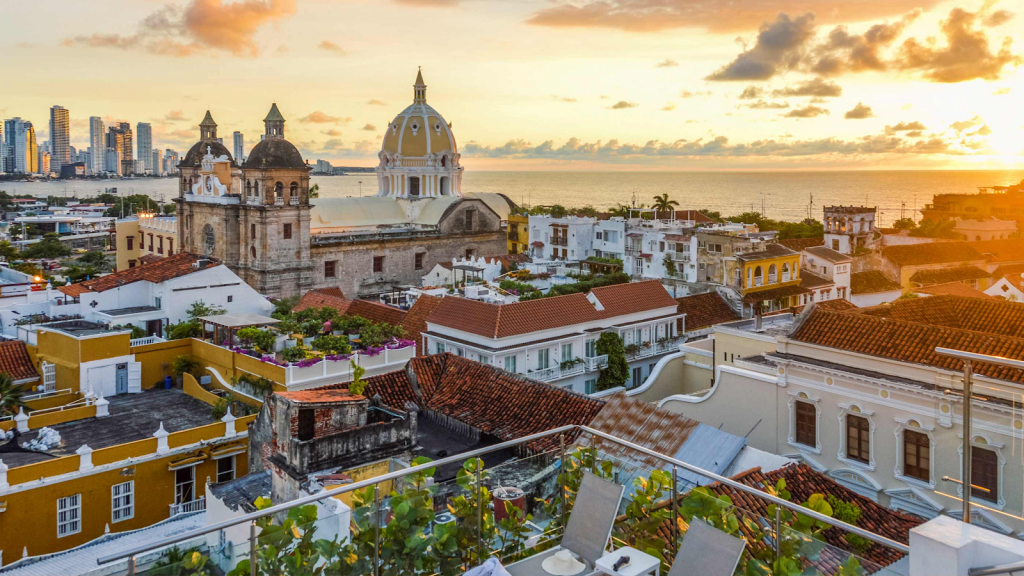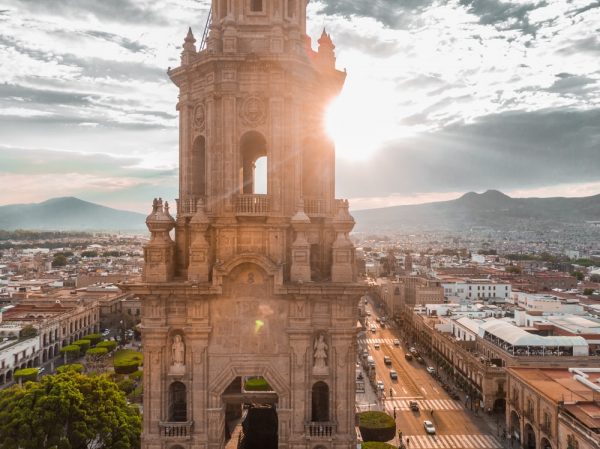
The film industry in Latin America has been growing for decades. Local and global distribution of Latin American films has been on the rise for a while.
Several Latin American countries are nowadays attractive production and filming hubs for foreign producers and filmmakers because of their film and television infrastructures, talented cast and crew, and local production incentives.
How does the Latin American film industry work, if we look at film production, financing, distribution and revenue models? And which film production incentives are there? Which are the benefits and the challenges foreign producers and filmmakers should keep in mind?
In this article I will give a global description of the Latin American film industry as a whole, without discussing any Latin American country in particular. That means that inevitably, I will generalize. However, please be aware that each country, and within each country, sometimes regions and cities, have their own, specific characteristics which will determine, for each country individually, potential benefits and challenges for foreign producers and filmmakers.
How Films Are Financed in Latin America
Let’s start with looking at how independent Latin American films are financed. Generally, films in Latin America get financing in the one or more of the follow ways:
- Grants: which can be from public sources, private contributions, or from film festivals;
- Public funding: this can include subsidies, loans or investment;
- Private funding: which may be equity or debt financing, or a combination;
- Bank financing: although rare, some films may be in a position to bank finance (part of) the production;
- Tax incentives: part of the production may be financed with tax-related incentives;
- Co-productions are a way to introduce foreign incentives or capital to the production;
- TV deals: a pre- sale to a domestic TV channel is one of the main sources of cash flow;
- Foreign distribution deals: pre-sales to foreign distributors also mean cash flow for the production;
- Sales Agent MG: if a sales agent acquires the worldwide sales rights for the film and pays an advance (minimum guarantee or MG), the advance can be used for the production of the film;
- Streamers or majores: a streamer (SVOD platform) cane either pay a buy-out style license fee for the distribution rights of the film or take over the production and finance the whole film.
Distribution of Latin American Films
Once financing is in place and the film is being produced, the focus will be on distribution. Independent films in Latin America generally look for the following ways of distribution:
For domestic exploitation:
- Theatrical distribution and exploitation; and
- A TV deal for exploitation of the film rights in the home territory;
For foreign exploitation:
- A deal with a SVOD platform for worldwide streaming services; or
- A major studio that picks up worldwide distribution rights; or
- Independent foreign distribution, either through a worldwide distributor or a sales agent who sells the distribution rights to local distributors.
Latin American Films and their Revenue Models
The purpose of distributing the film is to generate revenues and with those revenues, repay loans and investments, pay deferred producer and other fees, and if the film breaks even, to distribute profits amongst the profit participants. Independently produced Latin American films generate their income through a combination of revenue streams, depending on the distribution and exploitation channels available to them.
Revenues streams may be the following, often in this order of priority:
- Revenues generated by domestic theatrical release of the film;
- Revenues generated by a domestic TV deal;
- Revenues generated by foreign distribution of the film, which can be subdivided as follows:
- A minimum guarantee received from a worldwide distributor (often a major studio or a so called “mini major”) or sales agent for the acquisition of the worldwide distribution rights of the film (excluding the domestic distribution rights);
- Royalties paid by local distributors per territory (country, language zone, or geographic area) based on distribution agreements entered into by a foreign sales agent with local distributors. These royalties generally consist of minimum guarantees for the distribution rights in a specific territory, for a specific set of exploitation rights (Theatrical, TV, Internet);
- A third option is selling the worldwide exploitation rights of the film, including domestic, to a streaming service, like Netflix or Amazon. They generally pay a licensee fee for all worldwide distribution rights, a buy-out for a specific period of time.
Latin America and Production Incentives
Now that we have a global overview of how independent Latin American films are financed and distributed, and how productions earn their revenues, let’s focus on the available production incentives in Latin America.
Production incentives are usually government driven and are often applicable for a limited period of time.
The reason for countries to introduce production incentives can be multiple, amongst others: stimulation of the local economy, creation of jobs, cultural or touristic promotion, and support of the local film community.
Which type of incentives are there? I tend to define the following:
- Cash rebates;
- Discounts;
- Tax incentives;
- Co-Production.
In the following paragraphs, we will focus on two groups of production incentives in particular: tax incentives and co-production treaties.
Latin American Film Production and Tax Incentives
Tax incentives can consist of one specific tax-related incentive, or a combination of two or more tax-related stimulations. Roughly, tax incentives fit into the following two categories:
- Tax rebates for qualified, local expenses in connection with the production;
- Tax exemption, mainly a reduction or nullification of VAT payable on services hired and / or products bought locally the production or shooting of the film.
Each country in Latin America has its own tax incentives and for each country, the rules to qualify may differ.
Latin America and Co-Production Options
A film co-production is a joint venture between two or more different production companies for the purpose of film production. In the case of an international co-production, production companies from different countries (typically two to three) are working together.
The benefits of a co-production may include:
- The ability to pool financial resources;
- Access to the partner government’s incentives and funding sources;
- Access to the partner’s market;
- Access to a particular project initiated by the partner;
- Access to a desired location.
Several Latin American countries have co-production treaties with each other or countries outside the region. An official treaty co-production is a partnership between two production partners that adheres to national or regional government funded co-production requirements in order to receive the benefits of national status in the countries of both producing partners.
Also, there are co-production initiatives and treaties on an inter-governmental level. A good example is the Ibermedia program, which is a co-production initiative between most of the Latin American countries, Spain, Portugal, and since relatively recently, Italy.
Benefits Of Film Production In Latin America
We now know how independent Latin American films are financed, distributed and exploited, and also which incentives exist for production and filming.
Now, which are the benefits and the challenges for foreign producer and filmmakers?
Let’s start with the benefits:
- Locations: there are many unique locations in Latin America that may be the best fit for your production;
- The production incentives as mentioned above, may be a reason to decide producing or shooting your film in Latin America;
- Latin America may be a source of financing for your film, coming from one or more of the sources mentioned above (like co-production, a pre-sales distribution deal or equity);
- Depending on where you are based, producing or shooting your film in Latin America can lead to costs reduction, as costs of services and products may be lower;
- The reason to produce or shoot in Latin America, can be because of unique talent of cast and crew;
- Latin America combines a variety of cultures and histories, which produce stories for your next film and a reason to produce and shoot your film in Latin America.
Challenges Of Film Production In Latin America
The benefits to produce in Latin America are clearly there, but I should also mention some potential challenges for foreign producers and filmmakers:
- Language may be a challenge: in most of the countries of Latin America, the official language is either Spanish or Portuguese. Knowledge of English or other foreign languages, may be limited;
- Cultural characteristics should be taken into account. This can include all kinds of culture related matters, ranging from eating habits to work ethics;
- In several parts of Latin America, the infrastructure (including the quality of roads, services, but also the internet connections) can be a challenge for film productions;
- Unfortunately, some countries deal, to a lesser or larger extent, with safety issues. These safety issues can be caused by local upraise, gang-related violence, or local political conflicts;
- Availability or effectiveness of incentive programs may change over time, especially as political or economic situations improve or worsen;
- Climate in Latin America can be subject to (drastic) seasonal or sudden changes. Hurricanes, drought, earthquakes, or tropical diseases can all problems or emergencies film productions may face.
In this article we discussed film financing, distribution and revenue models of independent films in Latin America, as well as production incentives in Latin America available to foreign producers and filmmakers.
There are several benefits for foreign producers and filmmakers for producing or shooting an independent film in Latin America, including unique locations, production incentives, financing sources, cost reduction, presence of unique talent, and unique stories.
Also, foreign film productions may face several challenges in Latin America, which include language, cultural matters, infrastructure, safety issues, availability or effectiveness of incentive programs and climate related issues.
David Zannoni



